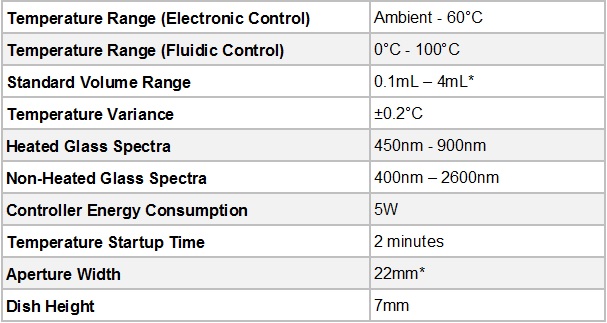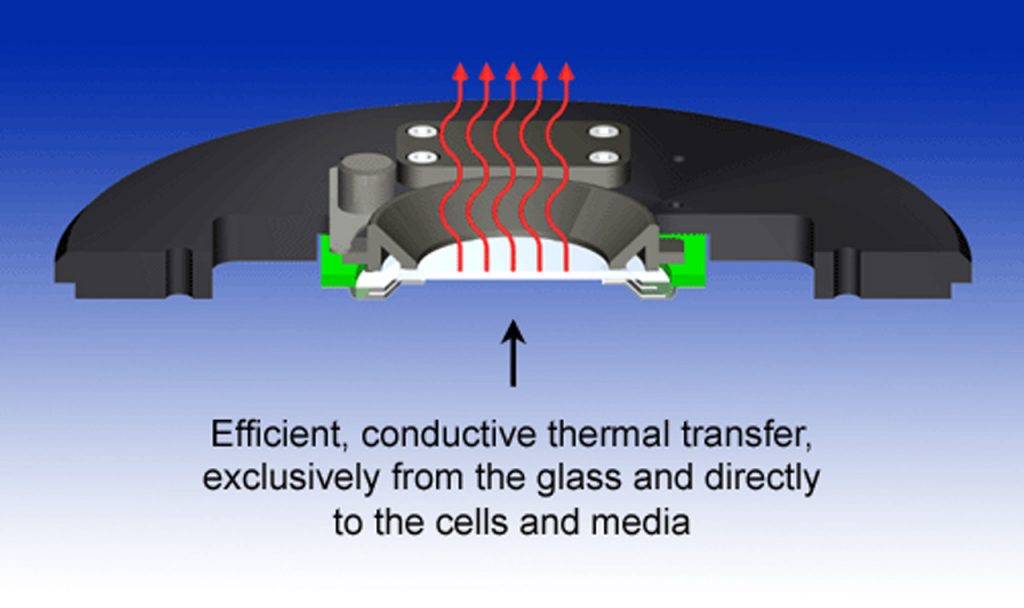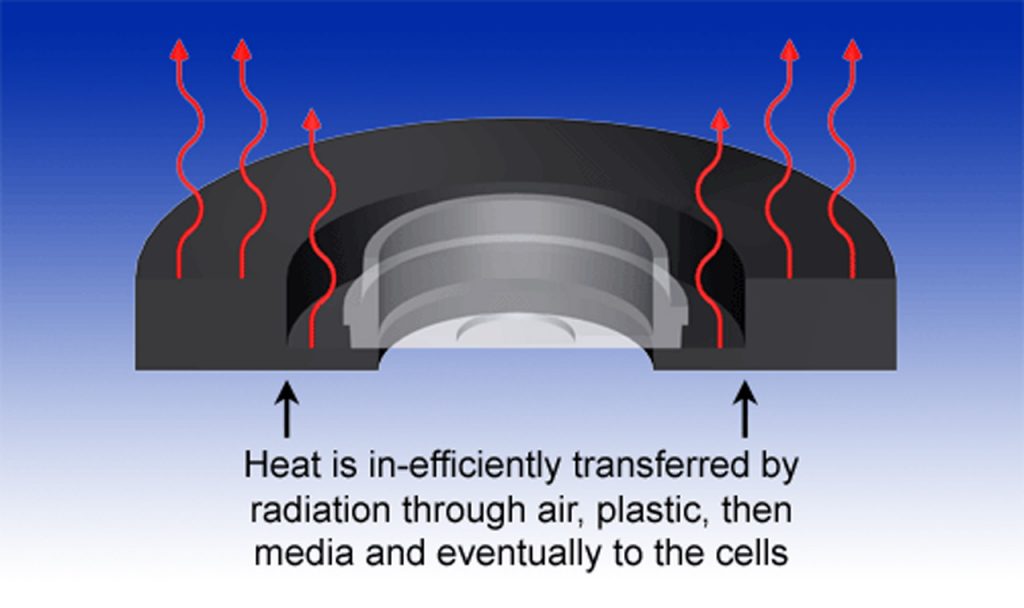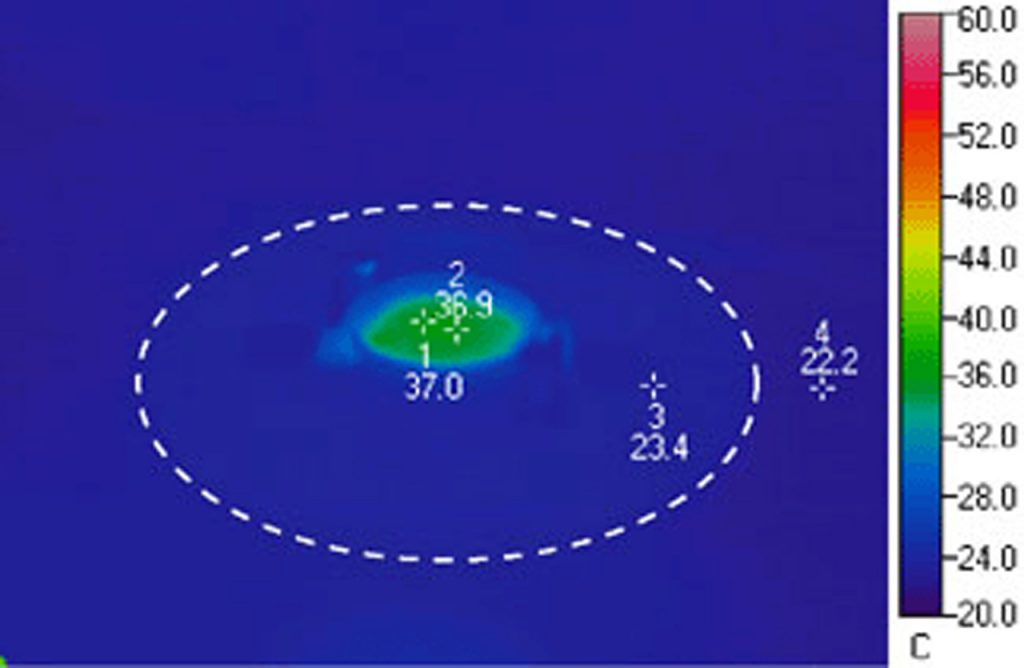A comprehensive environmental control system for observing cell culture on a microscope that is ideal for multi-user facilities. Plate, incubate and observe without the need to transfer your cells. Ideal for all microscopic specimens not requiring a flow channel. includes: Delta T Controller, Heated Lid, Coverglass Lid, Culture Cylinder Pack: (1) 4mm, (1) 6mm, (10) 0.17mm clear dishes. Stage adapter must be ordered separately.
$4,999.25
The Bioptechs Delta T™ System is a micro-environmental control system used on microscopes to enable long term acquisition of high resolution, time-lapse images of cells. The Delta T™ is designed to simulate host conditions on the stage of a microscope and provide an optimal optical environment for microscopy. This two-step system enables cells to be plated and observed without having to transfer them to another structure for imaging. The basic system components are, the Controller, a Stage Adapter, and Dishes. There are a variety of accessories for the Delta T™ that enable it to be used with nearly any specimen type.
The Bioptechs Delta T™ Culture Dish System is the only culture dish that provides uniform and precise heat to the contents of the dish without heating the stage of the microscope. It uses number 1.5 thickness cover glass bottomed dishes that have an electrically conductive, optically transparent coating of ITO on the underside. The coating is electrically powered to directly warm the contents of the dish. This is an exclusive technology to Bioptechs and provides features and capabilities no other system can match. An intelligent feedback loop passes an electrical current through a thin-film coating on the underside surface of the glass substrate on which the cells are grown. Heat is applied directly to the cells without the inefficiencies associated with peripheral heating by traditional peripherally heated culture dish warmers. Bioptechs exclusively offers opaque culture dishes which eliminates the unwanted ambient light background for fluorescence imaging. The controller features a real-time temperature display and fast learning curve to compensate for cooling due to surface evaporation while responding to temperature changes due to perfusion. There is also an alarmed protection circuit to safeguard the cells and an internal reference for the user adjustable calibration. The standard controller has a temperature range of ambient to 50° C. Extended ranges are available upon request.
Delta T Controller
Heated Lid
Heated lid Power cord
Power Supply
Coverglass Lid
4mm Culture Cylinder
6mm Culture Cylinder
10 pack of 0.17 Culture Dishes
*Stage adapter must be ordered separately to match stage



Thermographic Images
The thermograph on the left shows the efficiency, accuracy and uniformity of the Delta T™ system. Notice the temperature of the stage adapter. It is nearly the same temperature as the room temperature background. The dotted oval shows where the edge of the stage adapter is in visible light. Only the specimen and media are heated. Power consumption is 0.9 watts because heat is only applied to the specimen area. There is no heat transmitted to the stage. Therefore, it remains “Z” axis stable. This is a sharp contrast to traditional peripheral heating methods (shown below right), and clearly superior.


The thermograph above on the right indicates the disadvantage of peripheral heating. This is a thermal image of a 50mm culture dish in the center of a 100mm diameter uniformly heated, 3mm thick, aluminum plate with a 25 mm hole in the center. This image was acquired after 20 minutes of equilibration. Note the high temperatures of nearly 60° C, that it takes to reach 37° C in the specimen area. In this case heat that is not beneficial to the specimen is sunk into the stage causing Z-axis instability, not to mention the non-uniform temperature of the specimen area.

3560 Beck Road
Butler, PA 16002
U.S.A.
sales@bioptechs.com
1-877-877-LIVE-CELL (548-3235)
(United States & Canada)
Direct: +1-724-282-7145
(United States & International)